Beautiful Swans
First of all a confession. If you might recall I started Mike’s Monday Pics on June 21st last year to force myself to reduce the backlog of pictures I’ve set aside to upload to GreatBirdPics. At that time I had 554 pictures in the backlog. Over the past 8 months I actually moved a couple hundred into the site, getting the backlog down to 357, but the last couple of months I have added so many pics from our trips to Hilton Head, Florida, and California I now have 996 in the backlog! I missed Monday’s deadline so here are the pics I meant to put in Monday on Thursday. Only 989 to go!
I better get going – here are seven pics of swans I’ve taken the past few months along Centennial Trail in Lemont, IL. The Des Plaines River flows there and has open water most of the winter: this attracts all sorts of waterfowl, including swans. We see three types of swans there:
Mute Swans are seen year-round in the midwest and can be found in a variety of small lakes and rivers on a regular basis. They are very territorial so people put statues of them up in their ponds to scare Canada Geese away!
Here is another Mute Swan. You can see that the bill is oranger than the one above (it was probably less mature). Note the flotilla of Redheads swimming by it.
Trumpeter Swans are also found on the open waters of the Des Plaines River, sometimes in large numbers. The last time we went there we counted 17 in the mile or so we covered. These are the largest swans we have in the U.S. Note in the first picture the black lines from the top of the eyes come together in a sharp V at the top of the bill. This is a good way to identify the Trumpeter, as the Tundra Swan’s border line is more of a U shape.
Our third type of swan is the Tundra Swan. Although we usually spot a couple every winter, the Tundra Swan is the least common of the three swans we see here. It is the smallest of the three, weighing about 10 lbs. less than the Trumpeter and is 10 inches shorter in length than both Mute and Trumpeter swans. The Tundra is most readily identified by the yellow line from the eye onto the bill. That is not alway present so its smaller size and the U shaped border between the forehead and bill helps to identify it.
Stay Safe. Go Birding. Take Pics. Share Here. Repeat.
Mike
If you would like to learn more about GreatBirdPIcs Click Here. Members can post their own great bird pics, create an online gallery of their works, and receive regular emails like this about bird photography.
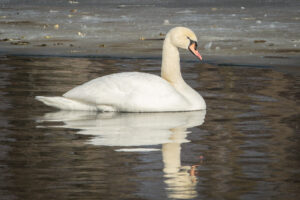
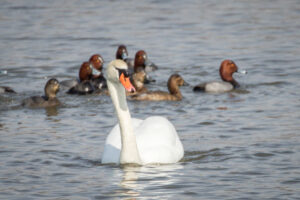
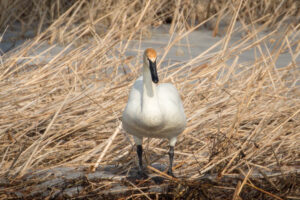
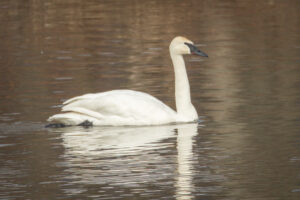
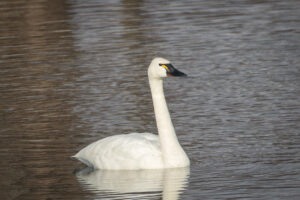
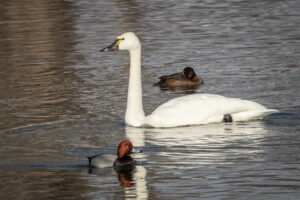
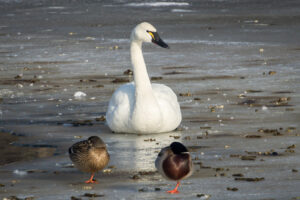
That’s a lot of swans!